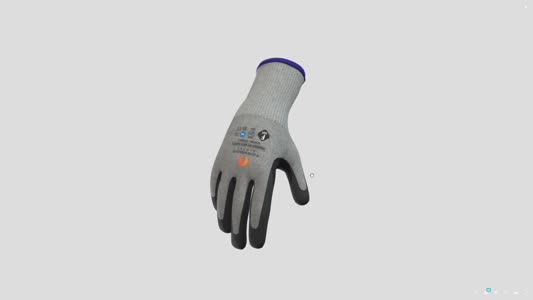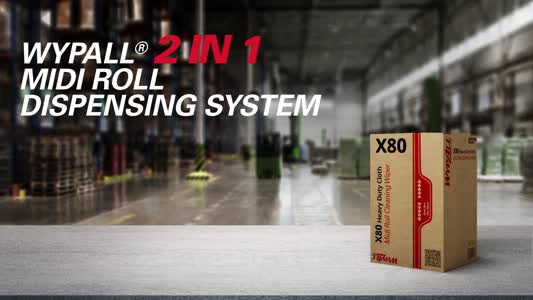
 |
Mark Sennett
Managing Editor |
 |
Kelly Rose
Editor |
| Home> | PPE | >General PPE | >Bend the knee to protection |
Bend the knee to protection
15 May 2023
Peter Dumigan takes a look at the problems associated with permanent damage to the knee and how to prevent long-term issues.

MUSCULOSKELETAL DISORDERS are varied and include injuries that affect the back, joints and limbs. They’re covered by laws such as the Health and Safety at Work etc Act which designates that both employers and workers have responsibilities to ensure safety and wellbeing.1
The Management of Health and Safety at Work Regulations2 oblige employers to assess the risks to the health and safety of their workers. However, the Health and Safety at Work Act itself specifies that workers must take reasonable care of their own health and safety and co-operate with their employer so they can ensure personal compliance with their own health and safety responsibilities.
The regulations also require workers to make use of equipment their employer has provided for them and use it in accordance with their training. Of course, this does not preclude workers from developing their own understanding of the issues, consequences and identifying the best products to ensure their wellbeing.
In hazardous work environments, it’s known that trips, slips, bumps, falls and repetitive strain injuries can be causes of musculoskeletal injuries. But while sprains, bruising and tears can be self-healing through rest, recuperation and physiotherapy, longer term wear and tear – particularly in knee joints - can be serious and long-lasting. That’s why those people whose jobs require them to spend a lot of time working on their knees have to have an awareness of the potential health problems and an understanding of how to safeguard against them.
The knees are the largest and most complex joints in our body. Each is made up of the three main leg bones (femur, tibia, and fibula); the knee-cap (patella); cartilage which helps lubricate bone movement and fluid-filled sacks (the bursa) which cushions direct impact to the joint. Tendons and ligaments hold the knee components together but if they become weak or damaged, the bones can become misaligned, causing ‘mechanical malfunction’, pain and potential long-term injury.

The severity of pain can vary - depending on the cause of the knee problem. Symptoms include swelling, stiffness and aches; weakness or instability; clicking or crunching sounds and difficulty in fully straightening the knee, each of which can prevent an individual from working safely.3
Problems associated with permanent damage to the knee are widespread and it is said that over 100,000 knee replacements are now carried out annually in the UK.4 The wait for knee surgery can be both painful and lengthy and private treatment is expensive. An additional burden for employers if knee damage is caused at work could be a costly compensation claim which might be as much as £15,000 on top.5
Aside from the financial cost of medical treatment and potential compensation, the cost of time off work can be considerable. Following a replacement knee operation, patients are in hospital for 2-4 days; the return to normal day to day activities takes about six weeks of rest and rehabilitation; while a full recovery can take up to 12 months.
Risk of injury
While both employers and workers are legally obliged to ensure that proper safety footwear is worn in hazardous environments for protection and comfort, the same doesn’t necessarily apply to knee protection. It’s surely common sense though that the same principle should apply to those who work and move around a lot on their knees. In that scenario they effectively act as ‘feet’ and become the sole weight-bearing joints supporting the rest of the body. Therefore, given they are constantly under pressure when kneeling, they deserve proper protection.
It’s said that hard-working craftsmen and women put more pressure on their knees than many top athletes. That’s why the risk of knee injuries is far higher among trade professionals and manual workers than other occupations.6 For them knee injuries are a perennial problem and can be highly aggravating, but prevention is far easier than cure by taking the proper steps to look after them.
A common ailment is Housemaid's Knee or Bursitis, which is caused by kneeling for long periods of time and by repetitive knee movements such as crouching down and standing up. Fluid builds up in the Bursa causing swelling, soreness and stiffness in the joint.7
What’s the answer?
The most effective knee protection in the workplace is, as you might expect, covered by legislation and PPE certification standards. The EN 14404 Knee Protection Standard deals with the size, force-distribution and penetration-resistance of kneepads.
Type 2, Level 1 protection ensures reliable knee protection for workers in a mobile working environment that involves regular kneeling to perform their job. This protection level is designed to protect the knees in all types of working environments where you find rough, hard and damp surfaces as well as ground debris up to 1 cm thick. The Type 2, Level 0 standard designates effective knee protection for those people who need to work on their knees indoors – but only occasionally.8
There have been various types of knee protectors available over the years such as inflexible strap-on pads that cut into the back of your knees, causing bruising and potentially impeding blood circulation.
Effective protection really only comes from combining properly designed Work Trousers that use market-leading fabric technology with a knee protection system that has been thoroughly tested, manufactured and certified using materials that perform to the highest standard day in, day out.
The most effective kneepads are those that work efficiently and in tandem with the design of the Work Trousers they’re used with - staying in precisely the right position all the time to ensure reliable and comfortable knee protection.
Effective kneepads should also feature hard-wearing materials on the outside edges and softer materials in the centre to combine efficient pressure distribution and protection against sharp and rough objects with maximum comfort.
The design should also feature high sides to prevent your knees from sliding off the kneepads. This design approach will also ensure the kneepads extremely flexible when you walk, while closing around your knees when you kneel down.
Kneepads that stay in position around the knee is crucial and that’s exactly what you get with the patented Snickers Workwear KneeGuard and KneeGuard Pro positioning systems which are complimented by 8 types of kneepads designed for a variety of trades and the demands of different working environments.
Properly designed and certified trousers and kneepads will have a pocket design that has special seams which allow the wearer to adjust the kneepads for individualised comfort and protection. Such a design makes the kneepads ‘flex’ when you walk, which also ensures they automatically mould around your knees when you kneel down.
Most workwear manufacturers supply kneepads for their work trousers and they vary in price, quality and effectiveness. It will come as no surprise to most that some have no guarantee of comfort or protection.
However, the more discerning professional tradesmen and women – those particularly concerned with their health and welfare on site – will invest in ‘active’ kneepads that are proven to last and protect. The top performing ‘active’ kneepads take cutting-edge knee protection to a completely new level with materials like the revolutionary D3O compound.
D3O is an impact protection material with a variety of sports and outdoor activity applications.9 It’s an active and specially engineered rubbery material comprising intelligent molecules which ‘flow’ with you as you move. On shock they lock together to absorb the impact energy which provides high-frequency protection.
The durable D3O material also features an extremely slow compression rate, ensuring that the kneepads keep their shape during hard work and for long periods of time. What’s more, given that knees are not flat, the ergonomics of D3O kneepads is important in providing continuous comfort around the profile of your knee.
So for those people who work a lot on their knees, the Snickers Workwear KneeGuard and KneeGuard Pro system using the market-leading D3O Kneepads will give you by far the best, long lasting knee protection available. So, when you’re buying work trousers and especially the kneepads, look for the ones that are tested and certified for performance, efficiency and protection to deliver comfort and wellbeing day in day out.
References
1 Health and Safety Executive, https://www.hse.gov.uk/legislation/hswa.htm
2 Health and Safety Executive, https://www.hse.gov.uk/simple-health-safety/risk/index.htm?utm_source=hse.gov.uk&utm_medium=referral&utm_campaign=risk&utm_content=home-page-popular
3 The Mayo Clinic, https://www.mayoclinic.org/diseases-conditions/knee-pain/symptoms-causes/syc-20350849
4 The National Rheumatoid Arthritis Society, https://nras.org.uk/resource/knee-replacement-surgery/#:~:text=According%20to%20the%20National%20Joint,out%20annually%20in%20the%20UK
5 Simpson Millar, https://www.simpsonmillar.co.uk/media/personal-injury/claims-for-knee-injury-caused-by-working-conditions-in-uk/
6 Hultafors Group UK, https://www.snickersworkwear.com/list/stories/save-your-knees
7 Dr Colin Tidy and Dr Laurence Knott, https://patient.info/bones-joints-muscles/knee-pain-patellofemoral-pain/housemaids-knee-prepatellar-bursitis#nav-0 , www.patient.info
8 Hultafors Group UK, https://www.snickersworkwear.com/list/protective-standards/en-14404-knee-protection
9 D3O®, https://www.d3o.com
Peter Dumigan is managing director of the Hultafors Group UK, which owns Snickers Workwear, Hultafors Tools, Solid Gear and Toe Guard safety footwear. For more information, visit www.snickersworkwear.co.uk
- Out with the cold
- Pioneering sustainable workwear
- Sustainable Hi-Vis protective wear
- Fabric of success
- Smart stretch shorts for summer
- Designed for health
- The Snickers workwear range brochure
- Stay Safe with Snickers Workwear
- Supporting COP26 - sustainable practices in workwear and safety footwear
- Insulator jackets


























